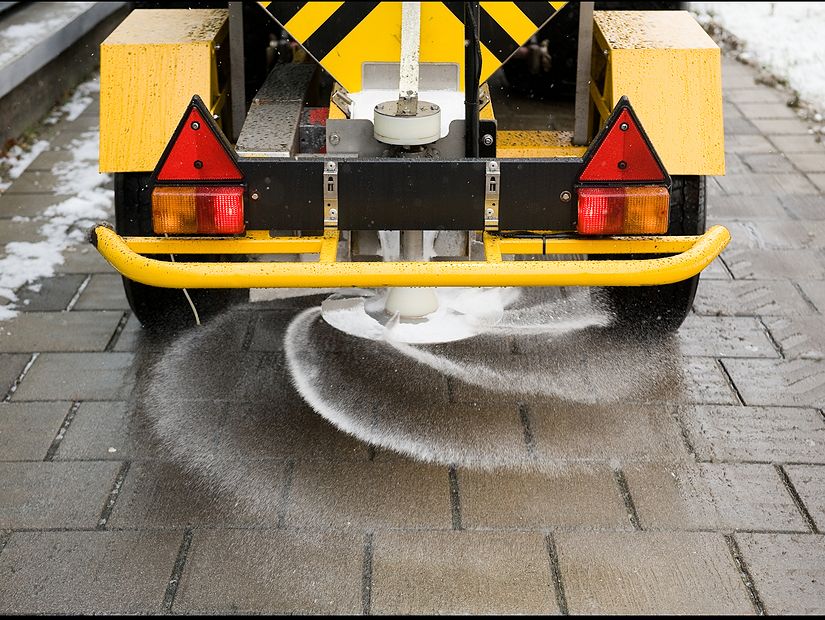 Long Island’s frigid winter season mandates de-icing solutions before, during and after a snow storm; insuring your parking lots and sidewalks are reliably clean.
Long Island’s frigid winter season mandates de-icing solutions before, during and after a snow storm; insuring your parking lots and sidewalks are reliably clean.
But, how much and how often is always up for debate. Bottom-line is safety and speed for your tenants and their customers.
Knowing a few key facts about de-icing your commercial property will prove to save you money in the long-run.
How Salt REALLY Aids in De-Icing Your Property and Why It’s Important to Know
Did You Know..? De-icing chemicals work by decreasing the freezing point of water. A 23.3% concentration of salt water will sustain its liquid state to -6 degrees Fahrenheit.
Before a dry de-icing chemical like salt (sodium chloride) can activate it must first dissolve into a liquid brine solution; caused by moisture from water, snow or slush.
Additionally, transforming ice or snow into water requires heat from the air, sun and / or ground. Chemicals lower the melting temperature, but it takes heat to melt ice to water.
Why is this important to you? Knowing how much, how often and when to apply salt arms you with an understanding of what REALLY works, versus what amateur snow removal companies usually apply to your commercial property.
Timing, Temperature and Correct Techniques Determine How Much Salt to Use and When
The surface temperature of your roads and walkways is directly related to the salt’s effectiveness when applied.
As the temperature decreases, the amount of de-icing solution required increases in order to keep roads from becoming dangerous. Interestingly, salt has the capability to melt five times as much as 30°F as at 20°F.
As you can see, small changes in temperature has a visible effect. In today’s world of commercial snow removal, trucks can be mounted with temperature sensors, allowing the crew to calculate better applications of salt depending on how cold the ground surface is at the time.
As a result, depending on the freezing levels of your commercial property will determine how much salt and de-icing solution is required, thus impacting your bottom-line.
Lastly, not only is temperature fluctuations an ongoing variable before, during and after a snow and ice storm; but timing is a key factor as well.
At temperatures over 20°F, calcium chloride and salt melt ice at a steady rate. Yet, when the temperature is at 10°F it will take approximately an hour for an eighth of an inch of ice to melt after salt application.
Reduce Damage to Roads and Walkways from Harsh Winter Freezing and Thawing
Did you know water in its frozen state expands up to 9%? This little known fact is what causes your commercial property’s roads and walkways to become damaged rather quickly.
Only when your snow removal company understands the science of freezing ice and how to control it before, during and after a large winter storm you will minimize the shelf-life of your roads pavement and concrete.
Shaded areas and low-lying spots on your property are susceptible to the most damage from ice freezing and thawing, because the ground tends to be much colder than areas exposed to sunlight.
The good news is… damage usually occurs in specific parts of the concrete, but will not affect the whole surface of your parking lots or walkways.
Apply this knowledge when hiring your snow removal services company this season; so you can avoid progressive damage to your property, thus saving you from needing to re-pave your parking lots and lay new concrete for your walkways.




